Jeep Cherokee 4x4 (2014-2019) engines, drive and performance
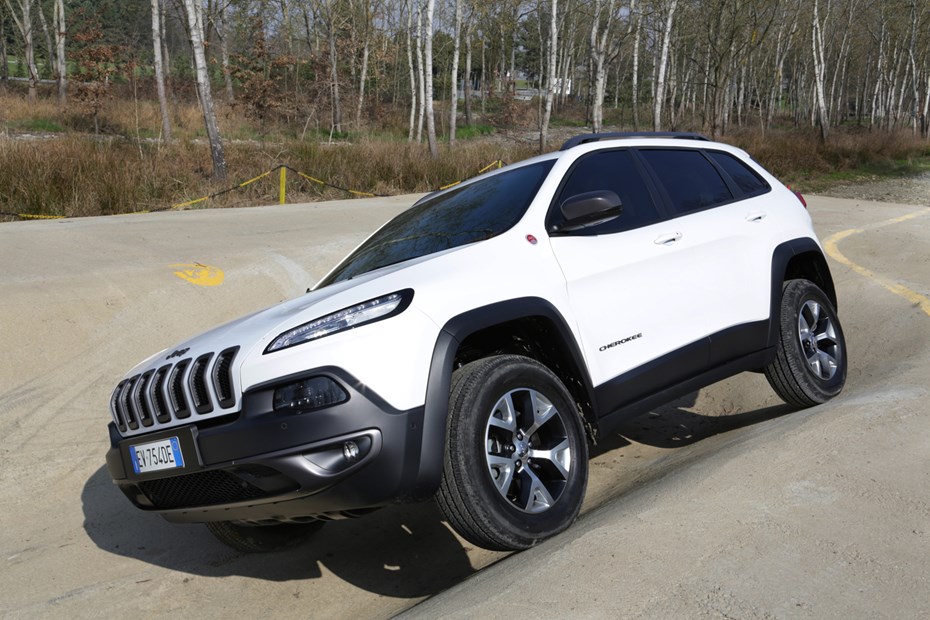
Although a petrol version of the Cherokee will be available a few months after launch, the UK range is very much concentrated on diesel power.
Diesel engines
There’s one diesel engine available, with a choice of two power outputs: 138bhp or 168bhp. The powerplant itself is Fiat’s 2.0-litre ‘MultiJet II’ engine with stop/start (which cuts the engine when the car is stationary to save fuel).
The 138bhp engine (already on the road in the Alfa Romeo Giulietta) comes with a six-speed manual transmission while the 168bhp version gets a new nine-speed automatic transmission.
We tested both and found that Jeep Cherokee performance with the 168bhp engine didn’t feel markedly quicker than the 138bhp version although it was marginally noisier.
Both engines were very quiet on the motorway, however. We’d suggest that unless an automatic transmission is an essential for you you’d be best served by going for the cheaper 138bhp engine, which has lower running costs and broadly similar performance thanks to an identical peak pulling power figure (350Nm).
That new nine-speed automatic transmission occasionally takes a moment or two to decide which gear to choose and as a result some shifts feel a little abrupt but for the most part it’s an unobtrusive and effective transmission.
Petrol engine
There is one petrol option, a 3.2-litre V6 which will be available only with the off-road oriented Trailhawk model, available in limited numbers in the UK from towards the end of 2014. It too will be matched with the nine-speed auto transmission and will likely be a rare sight on UK roads.
Two- and four-wheel drive versions
Both front-wheel-drive ‘4×2’ and four-wheel-drive ‘4x4’ versions of the Cherokee are available. The 138bhp diesel engine is available with either two- or four-wheel drive, while the higher power diesel is four-wheel-drive only.
All-wheel drive Cherokees feature an automatic rear axle disconnect function, so only the front wheels are powered during the majority of driving conditions, thus saving fuel.
There are two separate four-wheel-drive systems available, called Jeep Active Drive I and Jeep Active Drive II. The latter will be available in top Limited models from the later part of 2014 and is a more sophisticated system suitable for off-road use. Unlike the Active Drive I system, it includes a low range mode for tackling steep slopes or towing particularly heavy loads.
As a 4x4 the Jeep Cherookee is capable of driving on and off-road, and the Jeep brand has a heritage of producing cars that can handle testing off-road conditions.
On-road
Like most 4x4s, there is a reasonable amount of body roll when cornering but it’s well contained and the Cherokee is actually quite a composed, grippy car on twisty roads. The brakes are very good, too.
Ride-quality is largely comfortable but occasionally becomes more animated than you might expect on uneven surfaces, with small bumps shuddering through the car. We found the four-wheel drive Cherokee we tested had a marginally more tranquil ride than the front-wheel drive car we’d driven earlier.
Off-road
Jeep says the Cherokee has been designed ‘to excel on any and all terrains’ and its genuine off-road capability may be a selling point for some buyers. Those aiming to do any serious off-roading may want to consider the Trailhawk version, which includes underbody protection and a differential lock function to help it tackle steep slopes and loose surfaces.
All four-wheel-drive Cherokees include Jeep’s Selec-Terrain system, a switch located near the gearlever which enables the driver to choose from four modes: Snow, Sand/Mud Sport and Auto. The first two are fairly self-explanatory, while Sport triggers a perkier throttle response and in automatic models makes the transmission hold on to gears for longer and kick down more readily. Auto continually chooses the best settings for the conditions at the time. Trailhawk models also get a fifth Rock mode option.


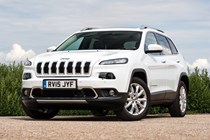
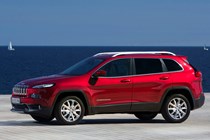
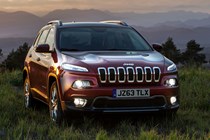
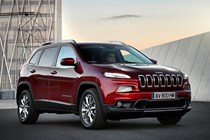
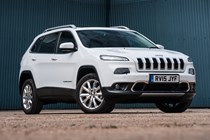
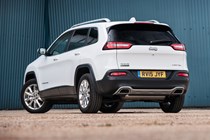
.jpg)
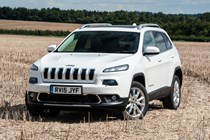
.jpg)
.jpg)
.jpg)
.jpg)
.jpg)
.jpg)
.jpg)
.jpg)
.jpg)
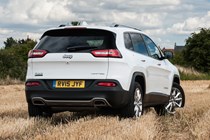


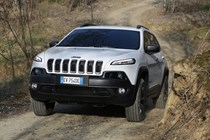
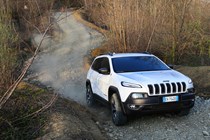
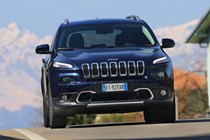
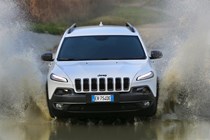
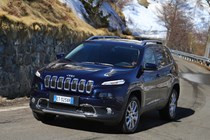
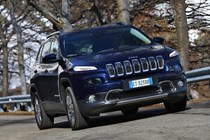
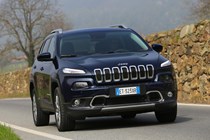
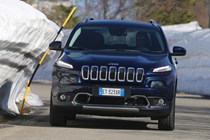
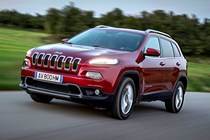
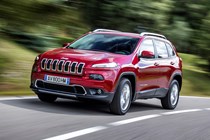
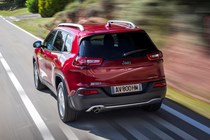
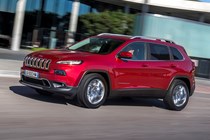
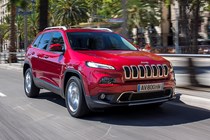
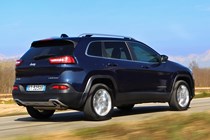
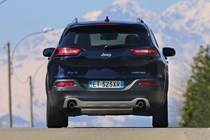
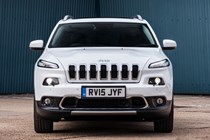
.jpg)
.jpg)
.jpg)
.jpg)
.jpg)
.jpg)
.jpg)
.jpg)
.jpg)
.jpg)
.jpg)
.jpg)
.jpg)
.jpg)
.jpg)
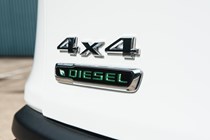
.jpg)
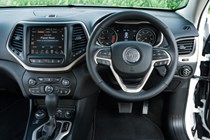
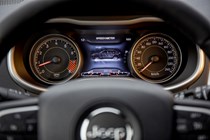
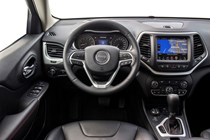
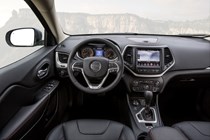
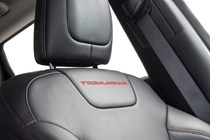
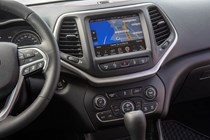

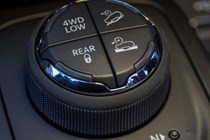
.jpg)
.jpg)
.jpg)
.jpg)
.jpg)
.jpg)
.jpg)
.jpg)
.jpg)
.jpg)
.jpg)
.jpg)
.jpg)
.jpg)
.jpg)
.jpg)
.jpg)
.jpg)
.jpg)
.jpg)
.jpg)
.jpg)
.jpg)
.jpg)
.jpg)
.jpg)
.jpg)
.jpg)
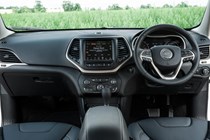
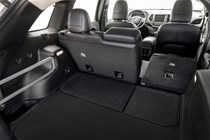

.jpg)
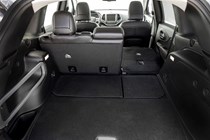
.jpg)
.jpg)
.jpg)
.jpg)
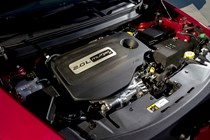
.jpg)
.jpg)
.jpg)
.jpg)
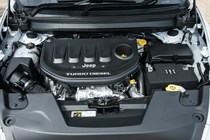






.jpg?quality=50)

.jpg?quality=50)
.jpg?quality=50)
.jpg?quality=50)
.jpg?quality=50)
.jpg?quality=50)
.jpg?quality=50)
.jpg?quality=50)
.jpg?quality=50)
.jpg?quality=50)



















.jpg?quality=50)
.jpg?quality=50)
.jpg?quality=50)
.jpg?quality=50)
.jpg?quality=50)
.jpg?quality=50)
.jpg?quality=50)
.jpg?quality=50)
.jpg?quality=50)
.jpg?quality=50)
.jpg?quality=50)
.jpg?quality=50)
.jpg?quality=50)
.jpg?quality=50)
.jpg?quality=50)

.jpg?quality=50)








.jpg?quality=50)
.jpg?quality=50)
.jpg?quality=50)
.jpg?quality=50)
.jpg?quality=50)
.jpg?quality=50)
.jpg?quality=50)
.jpg?quality=50)
.jpg?quality=50)
.jpg?quality=50)
.jpg?quality=50)
.jpg?quality=50)
.jpg?quality=50)
.jpg?quality=50)
.jpg?quality=50)
.jpg?quality=50)
.jpg?quality=50)
.jpg?quality=50)
.jpg?quality=50)
.jpg?quality=50)
.jpg?quality=50)
.jpg?quality=50)
.jpg?quality=50)
.jpg?quality=50)
.jpg?quality=50)
.jpg?quality=50)
.jpg?quality=50)
.jpg?quality=50)



.jpg?quality=50)

.jpg?quality=50)
.jpg?quality=50)
.jpg?quality=50)
.jpg?quality=50)

.jpg?quality=50)
.jpg?quality=50)
.jpg?quality=50)
.jpg?quality=50)
